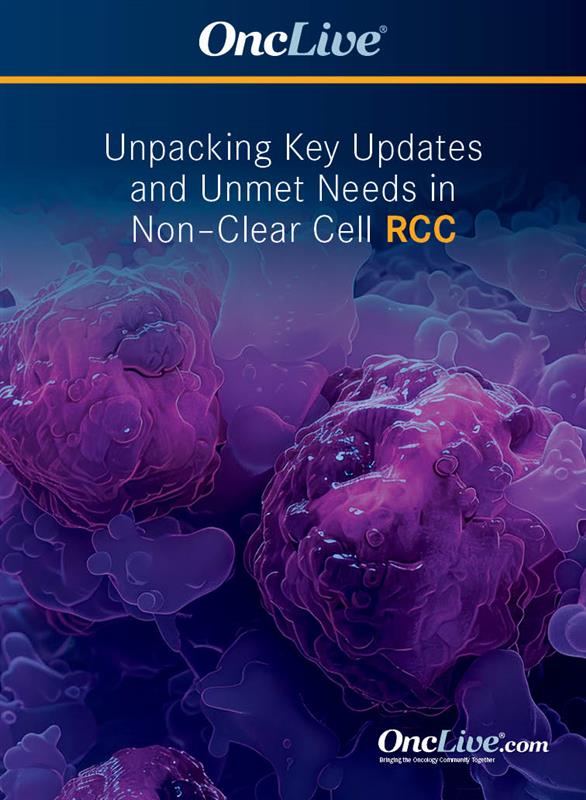Commentary
Video
Supplements and Featured Publications
Dr Ornstein on the Use of IO/TKI Doublets in Non-ccRCC
Moshe Ornstein, MD, MA, discusses the use of first-line IO/TKI doublet regimens in patients with non–clear cell renal cell carcinoma.
Moshe Ornstein, MD, MA, medical oncologist, Department of Hematology and Medical Oncology, Cleveland Clinic, discusses the use of first-line immune-oncology (IO)/TKI doublet regimens in patients with non–clear cell renal cell carcinoma (non-ccRCC).
Recent prospective clinical trials in non-ccRCC have investigated IO/TKI combinations, and data have demonstrated the efficacy of these types of regimens for patients with ccRCC, Ornstein begins. For instance, the phase 2 KEYNOTE-B61 trial (NCT04704219) evaluated lenvatinib (Lenvima) plus pembrolizumab (Keytruda) in an all-comer population of patients with non-ccRCC, including those with papillary, chromophobe, translocation, and unclassified disease histologies, he says. In this international trial, among 158 patients in the overall population who received the doublet at the standard dose, the objective response rate (ORR) was 51% (95% CI, 43%-59%). Patients with chromophobe histology (n = 29) had an ORR of 35% (95% CI, 18%-54%). Furthermore, in the overall population, the median progression-free survival (PFS) was 17.9 months (95% CI, 15.1-22.1) with the doublet, and the median overall survival (OS) was not reached (NR; 95% CI, NR-NR). These findings support the National Comprehensive Cancer Network (NCCN) Guideline recommendation for lenvatinib plus pembrolizumab as a frontline treatment option for patients with non-ccRCC.
The NCCN also recommends cabozantinib (Cabometyx) plus nivolumab (Opdivo) for use in patients with previously untreated non-ccRCC based on findings from a smaller phase 2 trial (NCT03635892), Ornstein explains. In the overall population (n = 40), which included patients with papillary, translocation, and unclassified RCC, the ORR was 48% (95% CI, 31.5%-63.9%). In the subgroup of patients with papillary disease, the ORR was 47% (95% CI, 30%-64%). In the overall population, the median PFS with the doublet was 13 months (95% CI, 7-16), and the median OS was 28 months (95% CI, 23-43).
Both doublets are effective treatment options for patients with non-ccRCC, and IO/TKI combination regimens should be the standard of care for this patient population, Ornstein emphasizes. Treatment decision-making in the upfront setting relies on patient preference and individual data interpretation, he concludes.










